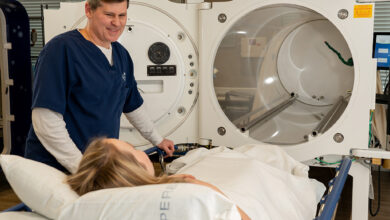The Correlation Between Body Dysmorphic Disorder And Eating Disorders

Body dysmorphic disorder is a type of mental illness. If you have BDD, you may be so concerned with the way you look that it interferes with your ability to function properly. Many of us have imperfections in our appearance that we see as flaws. However, if you suffer from BDD, your reaction to this “defect” may be overwhelming.
Negative ideas regarding your physique may be difficult to control. You can even spend hours a day obsessing about your appearance. Your thoughts can become so unpleasant and persistent that you may consider suicide.
A mix of environmental, psychological, and biological variables is assumed to be the cause of this illness. Bullying or teasing can instill feelings of inadequacy, embarrassment, and the fear of ridicule. It’s common in people with eating problems, but it’s a different problem. Here’s how they might be connected.
Symptoms Of BDD

It’s probable that you’re experiencing a considerable disruption in your quality of life as a result of these beliefs’ persistence. If you suspect a loved one is suffering with BDD, look for the following signs and symptoms:
- Frequently changing body positions
- Clothes that conceal specific body areas or features
- An excessive amount of grooming
- Excessive use of cosmetics
- Exaggerating the importance of other bodily parts or physical characteristics
- Examining one’s appearance in mirrors on a regular basis
- Are you interested in cosmetic surgery or other procedures?
- Seeking excessive reassurance from others about a certain attribute or body part
- Seeking excessive reassurance from others about a certain attribute or body part
- Adding layers such as hats, scarves, and gloves to your ensemble
In order to address these bodily concerns, people with BDD will commonly engage in repetitive behaviors. Even if you spend hours a day on these habits, the alleviation is very temporary.
Causes of Body-Dysmorphic Disorder

BDD has yet to be linked to a single cause. A number of factors are thought to have an impact on this illness, including:
- Abuse in the past
- A precipitating event
- Abnormalities in the brain
- Harassment
- Predisposition due to genetics
- Interpersonal and social interactions
What Is An Eating Disorder?

Eating disorders are behavioral problems marked by significant and persistent changes in eating habits, as well as disturbing thoughts and emotions. They can be life-threatening illnesses that disrupt physical, psychological, and social functioning.
Eating disorders impact up to 5% of the population and are most prevalent throughout adolescence and young adulthood. Several, particularly anorexia nervosa and bulimia nervosa, are more prevalent in women, but they can afflict anyone at any age.
Eating disorders are frequently linked to food, weight, or shape obsessions, as well as anxiety about eating or the consequences of eating certain foods. Restrictive eating or avoidance of certain foods, binge eating, purging by vomiting or laxative misuse, and compulsive exercise are all behaviors associated with eating disorders. These behaviors can become motivated in ways that resemble addiction.
Types of eating disorders include:
- Anorexia Nervosa – entails dieting and maintaining a lower-than-expected weight, as well as a fear of gaining weight and a distorted body image.
- Bulimia Nervosa – episodes of bingeing (uncontrollable eating) are interspersed with activities designed to compensate for the binges. Fasting, overexercising, vomiting, and using laxatives are examples of compensatory behavior.
- Binge Eating Disorder – involves eating a lot of food in a short period of time and having the sensation that the eating is out of one’s control.
- Pica – a type of eating problem in which a person consumes items that are not normally considered food. Because they are fascinated about the world around them, young children frequently put non-food items in their mouths. Pica children, on the other hand, go beyond that. They eat stuff that can cause health concerns on occasion.

- Rumination Disorder – is characterized by the voluntary regurgitation and re-chewing of food after eating, in which ingested food is willingly taken back up into the mouth and re-chewed, re-swallowed, or spit out. Rumination disorder can strike at any age, including childhood, adolescence, and adulthood.
- Avoidant Restrictive Food Intake Disorder – a newly recognized eating disorder characterized by a disruption in eating that leads to a continuous failure to achieve nutritional demands and high pickiness.
How Are The Two Related?

There are some similarities between BDD and eating disorders, but there are also significant differences. The following are some parallels:
- People suffering from anorexia nervosa or bulimia nervosa, as well as those suffering from body dysmorphic disorder, may be excessively concerned with their size, shape, weight, or outer appearance.
- People with body dysmorphic disorder may obsess on body parts that are comparable to those observed in anorexia nervosa and bulimia nervosa, such as the waist, hips, and/or thighs.
- They may also exhibit comparable behaviors such as excessive exercise and body monitoring (such as frequent weighing or mirror “checks”).
- According to studies, up to 12% of patients with body dysmorphic disorder also suffer from anorexia nervosa or bulimia nervosa.
It is crucial to note, however, that not everyone who suffers from body dysmorphic disorder also suffers from an eating issue. Some patients with body dysmorphic disorder concentrate primarily on certain body areas (like the shape of their nose). That’s not the same as focusing on your weight.
Other Co-Morbid Disorders

BDD and other mental health illnesses, notably anxiety disorders like OCD, social anxiety disorder (SAD), and substance abuse disorders, have been demonstrated to overlap. BDD is classified as obsessive-compulsive and associated disorders in the DSM-5.
According to studies, nearly 60% of people with BDD have experienced an anxiety illness at some point in their lives, and 38% have social phobia.
People can become alienated and fearful of socialization as a result of their obsession with a perceived physical imperfection, leading to feelings of hopelessness and sadness.
Treatment
Body dysmorphic disorder can be successfully treated, which is good news. The most successful treatment strategy is a mix of cognitive behavioral therapy and drugs, such as antidepressants.
Treatment can be complicated when multiple diagnoses are present (as is the case with someone who has both a body dysmorphic disorder and an eating disorder). Eating disorders are also treated with cognitive behavioral therapy.
If you have both problems, make sure your therapist is knowledgeable with both and can build a treatment plan that is tailored to your needs. Learn more about doing so here.
Presented by BetterHelp.



